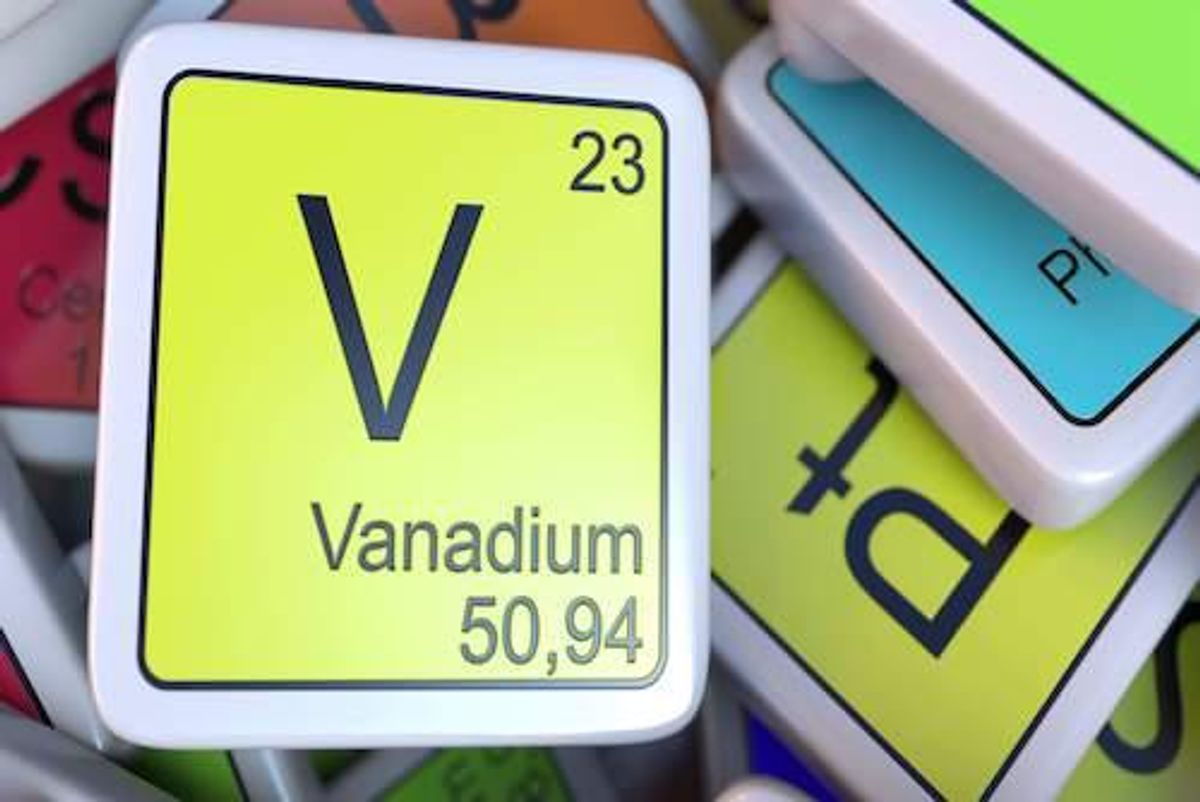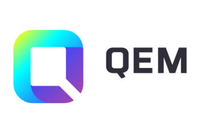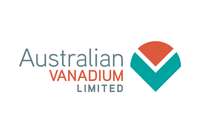How to Invest in Vanadium Stocks
Wondering how to invest in the vanadium industry? Learn the basics of supply and demand, as well as what key players are involved in the space.

Vanadium is an important metal for both the steel and battery manufacturing industries.
Both of these sectors play key roles in economic growth and a new era in defense and energy security. Supply and demand fundamentals for the metal indicate a strong long-term outlook for the vanadium market.
Many investors believe the vanadium industry is compelling and are interested in getting involved in this evolving market. Read on for a brief overview of the metal, from supply and demand to how to invest in this exciting industrial and battery metal.
In this article
What is vanadium?
Named after Vanadis, the Norse god of beauty, vanadium is a silvery-gray transition metal that was discovered in 1801.
Vanadium occurs in about 65 different minerals, and is mined as a by-product of other metals, usually uranium. It is also found in deposits of phosphate rock, titaniferous magnetite, uraniferous sandstone and siltstone. Aside from that, it is present in bauxite and in carboniferous materials such as crude oil, coal, oil shale and tar sands.
Vanadium demand trends
Vanadium applications have grown in recent years, contributing to price growth. The vast majority of vanadium is used as an additive in the steel industry to make a high-strength product that is lighter, stronger and more resistant to shock and corrosion.
Vanadium content of less than 0.1 percent is needed to double the strength of steel, and although other metals — including manganese, molybdenum, niobium, titanium and tungsten — can be interchanged with vanadium for alloying with steel, there is no substitute for vanadium in aerospace titanium alloys.
Over the last few years, China has increased its vanadium use, producing steel rebar with high tensile strength for construction. Vanadium compounds are also used in nuclear reactors because they have low neutron-absorbing properties. Vanadium oxide is used as a pigment for ceramics and glass, and can act as a catalyst in the production of superconducting magnets.
In addition to the steel alloy sector, the metal is often used to make parts for jet engines, as well as crankshafts, axles and gears. What’s more, vanadium redox batteries (VRFB) are currently generating excitement because they are reusable over semi-infinite cycles, and do not degrade for at least 20 years, allowing energy storage systems the ability to bank renewable energy.
However, these batteries are quite large compared to lithium-ion batteries, and are better suited for industrial or commercial use rather than for use in electric vehicles. That said, there are a number of companies around the world working on developing the technology for residential and smaller-scale use.
“VRFBs will have a considerable impact on the vanadium industry through the next two decades, but will play a minor role in the energy storage space — accounting for only 3.5 percent of total battery energy storage installations by 2035,” Piyush Goel, commodities consultant at CRU Group, told INN leading into 2025. “Although VRFBs will make up a small portion of total energy storage, they are significant consumers of vanadium and will consume the majority of global vanadium in 2035, compared to ~6 percent in 2024."
Vanadium supply trends
The top vanadium producing countries are China, Russia and South Africa, and worldwide vanadium production totaled 100,000 metric tons (MT) in 2024. China was the world’s largest producer of vanadium by far, contributing 70,000 metric tons of vanadium. Russia came in at a distant second with output of 21,000 MT, and South Africa was in third place with 8,000 MT.
Russian-owned Evraz is a large vanadium producer with assets in Russia and Czechia, and is a major supplier of ferrovanadium to the European steel market. In the first half of 2022, Russia's invasion of Ukraine and subsequent trade sanctions have prompted end-users to look for more secure vanadium supplies. By the end of 2024, Russian vanadium pentoxide exports to China had dried up, and supply uncertainties were also reported in South Africa.
As China is also the top consumer of the metal, analysts see the US-China trade conflict spurring a ramp up of vanadium production in the Asian nation. “With the current geopolitical environment, there is absolutely no way that China is going to rely on imports of vanadium,” said Erik Sardain, principal analyst for Project Blue, in a December interview with INN.
For his part, CRU Group's Goel believes other nations are also interested in boosting domestic vanadium production. “Governments worldwide have recognized vanadium as a critical mineral, leading to increased support for emerging vanadium projects,” he said. Goel cited as an example the private Australian company Vecco Group, which received an AU$3.8 million grant to advance the feasibility and design of its vanadium project in Brisbane.
However, vanadium will have to break free from the current low pricing environment if ex-China projects are to move from discovery to production.
How to invest in vanadium stocks
Vanadium bullion is available from private individuals, but the metal is not publicly traded, and so most experts do not advise investing in physical vanadium. Instead, vanadium stocks are a common way to gain exposure.
There are several publicly traded companies currently producing vanadium for investors to consider, as well as many companies exploring or developing vanadium projects, including as a by-product of other minerals. See the list of vanadium stocks you can invest in below for more details on their operations.
Australian Vanadium (ASX:AVL)
Australian Vanadium is building a vanadium pit-to-battery value chain in Western Australia that will incorporate its flagship Australian Vanadium project, considered one of the most advanced vanadium projects being developed globally.
Bushveld Minerals (LSE:BMN)
Bushveld Minerals is a primary vanadium mining company with one of the world’s largest high-grade primary vanadium resources. The company’s assets, all in South Africa, include two of the world's four operating primary vanadium production processing facilities and an under-construction vanadium electrolyte production facility.
Energy Fuels (TSX:EFR,NYSEAMERICAN:UUUU)
Energy Fuels is primarily focused on uranium and rare earth metals, but its White Mesa mill in Utah, US, has the ability to process uranium-bearing ore from its mines into vanadium pentoxide (V2O5) as well. While the company is not currently producing vanadium, it has a stockpile of finished V2O5, with production and sales awaiting stronger market prices.
Largo Resources (TSX:LGO,NASDAQ:LGO)
Largo Resources owns and operates the Maracas Menchen mine in Brazil, and has annual V2O5 equivalent production guidance of between 9,000 and 11,000 MT. The company supplies vanadium products for multiple applications, and has developed vanadium redox battery systems for advanced renewable energy storage solutions.
Manuka Resources (ASX:MKR)
Manuka Resources holds two fully permitted precious metals projects in the Cobar Basin of New South Wales, Australia. Through its wholly owned subsidiary, it is also advancing the Taranaki VTM iron-vanadium-titanium project, which would extract vanadium-rich iron sands from the seabed of the New Zealand exclusive economic zone.
NextSource Materials (TSX:NEXT,OTCQB:NSRCF)
NextSource Materials' advanced-stage Green Giant in-situ vanadium project in Madagascar is one of the world’s largest-known vanadium deposits, with a resource estimate of 60 million MT of V2O5 at an average grade of almost 0.7 percent. Green Giant is adjacent to NextSource's Molo graphite mine.
QEM (ASX:QEM)
QEM is advancing its flagship Julia Creek vanadium and energy project in Queensland’s North West Minerals Province. The project hosts one of the largest vanadium deposits in the world, with a JORC resource of 2.87 billion MT at 0.31 percent V2O5, and a contingent oil resource of up to 654 million barrels.
Strategic Resources (TSXV:SR)
Strategic Resources is targeting the green steel market with its flagship BlackRock vanadium-titanium-iron project in the Eeyou Istchee James Bay region of Québec, Canada. The project, which will host a mine and concentrator, is fully permitted and construction ready. The company will also have a metallurgical facility located in the Port of Saguenay.
VanadiumCorp Resource (TSX:VRB)
VanadiumCorp's goal is to become a fully integrated producer of high-quality vanadium electrolytes for vanadium flow batteries. It plans to source material from its Lac Doré vanadium- and titanium-bearing magnetite deposit in the Eeyou Istchee James Bay region of Québec.
Western Uranium and Vanadium (CSE:WUC,OTCQX:WSTRF)
Western Uranium and Vanadium is developing high-grade uranium and vanadium production at its Sunday Mine Complex in Colorado, US, and licensing and developing the nearby Mustang mineral processing plant. In Q2 2025, it delivered stockpiled and new production from Sunday to Energy Fuels' White Mesa mill through an ore purchase agreement.
This is an updated version of an article originally published by the Investing News Network in 2014.
Don’t forget to follow us @INN_Resource for real-time news updates!
Securities Disclosure: I, Melissa Pistilli, hold no direct investment interest in any company mentioned in this article.
Editorial Disclosure: Manuka Resources, NextSource Materials, QEM, and Western Uranium and Vanadium are clients of the Investing News Network. This article is not paid-for content.
- Vanadium Market Forecast: Top Trends for Vanadium in 2025 ›
- Top 4 Vanadium-producing Countries ›
- Top 3 Canadian Vanadium Stocks ›
- Vanadium Investing in Australia ›
- Vanadium Reserves by Country | INN ›


